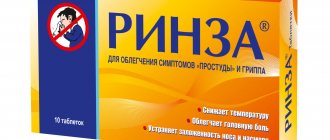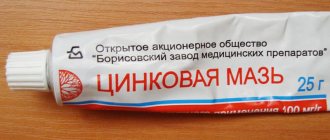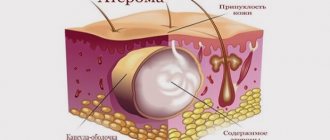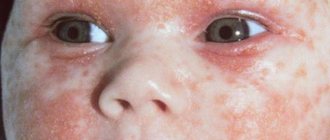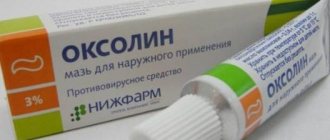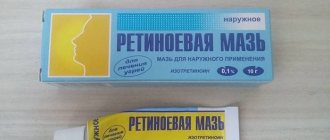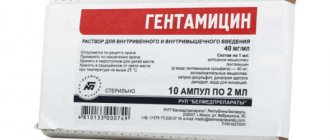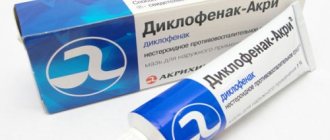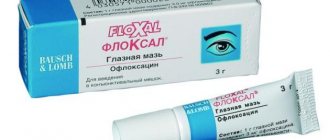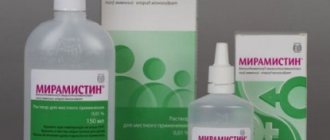Salicylic ointment
This pharmacological drug belongs to the group of keratolytic agents. The main active ingredient, salicylic acid, helps with various inflammations, skin diseases, and nail fungi. The drug has long established itself on the market as an affordable and high-quality healing agent that has an antiseptic effect. It is important to use it strictly following the instructions.
You can find sulfur-salicylic ointment on sale. Thanks to its sulfur content, it copes well with teenage acne, seborrhea and psoriasis. Salicylic-zinc paste is no less popular. Zinc oxide helps in the treatment of acne, dermatitis and age spots. This paste increases the elasticity of the skin, reduces inflammation, and is an assistant in the treatment of burns.
Composition and release form
The cream gets its name from its main component – salicylic acid. The antiseptic looks like a thick, greasy mass of white or gray color. It comes with 2, 3, 5 and 10 percent acid concentration. The ointment also contains petroleum jelly, which promotes uniform dissolution of the acid and convenient application to the damaged area. Possible forms of release of the drug are presented in the table:
| Type of packaging | Amount of product, grams | Acid content, % |
| Glass jar | 25 | 2, 3, 5, 10 |
| 40 | ||
| Aluminum tube | 10 | 2, 3, 5, 10 |
| 20 | ||
| 25 | ||
| 30 | ||
| 40 | ||
| 50 |
Pharmacological properties
Salicylic acid is an excellent antiseptic, actively fights skin rashes, dries out oily skin, and treats psoriasis. It speeds up the healing process of boils and various wounds, removes calluses and other growths, fights acne, and is suitable for treating eczema. By acting on the skin, the ointment promotes high-quality peeling of the skin, which has a great effect on tissue regeneration processes.
Today, pharmaceutical companies also produce an alcohol-based solution of salicylic acid. The properties of the ointment and the liquid are identical. The solution is more convenient to use in the treatment of warts (apply a bandage) and otitis media (drop 4-6 drops into the ear before bedtime). It is included in many medications of synthetic origin, as it has a stronger spectrum of effects.
What is salicylic ointment for?
Before starting to use the drug, you should definitely consult a therapist or dermatologist. The instructions that come with the ointment contain the main indications for use of the product. These include:
- wounds, scratches;
- burns;
- acne, rashes;
- warts;
- psoriasis, eczema, ichthyosis;
- seborrhea (regulates the activity of the glands);
- calluses;
- sweaty feet;
- red ringworm.
Articles on the topic
- Propolis ointment - contraindications and side effects, homemade recipe with photos
- Antifungal ointments - inexpensive but effective for children and adults with a description of the mechanism of action
- Fungal infections in women - pathogens, manifestations, drugs for therapy and prevention
Composition of the drug
The main substance in the solution of the substance is salicylic acid of a certain concentration.
In appearance, the medical product is a thick, homogeneous mass of white color and dense consistency. A dermatologist will tell you exactly what salicylic-zinc ointment helps with. The pharmaceutical industry produces salicylic ointment with an acid content that varies from 1 to 5%, as well as 10%, 60%. An additional substance in the ointment is purified petroleum jelly, with the help of which the acid gains elasticity and allows the ointment to be evenly applied to the skin.
Today there is a wide variety of medicines that include salicylic ointment:
- sulfur-salicylic;
- sulfur-zinc;
- kerasal
Salicylic ointment is often prescribed for psoriasis. Such skin inflammations are treated in courses; the instructions describe this in detail.
Be sure to read about Oflomelid ointment How much do sperm donors get paid and who can become one can be found out in this article
Antifungal cream Pimafucort:
How to use Salicylic ointment
Methods of use and the required dosage are prescribed by the doctor. According to the instructions, the mixture should be applied to areas of inflammatory skin disease 2-3 times a day in a thin layer - 0.2 g per 1 cm of skin. The product is harmless, but if the dose is significantly exceeded, it can cause an allergic reaction. After treatment with an antiseptic, you must place a sterile napkin on the skin to get rid of any remaining ointment. The product is used until complete recovery and restoration of damaged skin. On average, this ranges from 3 to 10 days.
Compound
The main active component of the ointment is salicylic acid. Its content is 2 g, 3 g, 4 g, 5 g or 10 g per 100 g of additional base. Depending on the proportion of this component, the following types of ointment are distinguished:
- Salicylic ointment 2;
- Salicylic ointment 3;
- Salicylic ointment 4;
- Salicylic ointment 5;
- Salicylic ointment 10.
The numerical information in the name indicates the percentage of the active ingredient in the drug to the auxiliary component.
also contains Vaseline. Its share is up to 100 g. This component plays the role of an auxiliary component, providing the possibility of uniform distribution of the main substance and ensuring ease of application.
This is the entire list of components included in the product. Additional components that enhance the effect of salicylic acid can be included in such types of ointments as Zinc-salicylic and Sulfur-salicylic ointments.
special instructions
Salicylic ointment should be used with extreme caution by people with very sensitive and dry skin - this can cause inflammation. The drug should not be applied to warts (especially hairy ones) located in the groin and on the face, as well as those covered with moles. Do not allow the ointment to come into contact with the mucous membranes of the body. If this happens, the area should be immediately washed with plenty of clean water until the burning stops and the product is completely washed away.
Composition and release form
The main active ingredient of the drug is salicylic acid.
Release form: ointment.
The product is available with different acid concentrations:
- 1% or 10 milligrams of active substance in 1 gram of medicine;
- 2% (20 milligrams);
- 5% (50 milligrams);
- 10% (100 milligrams).
Therapeutic properties of the drug:
- anti-inflammatory - eliminates itching, burning, swelling, redness of the skin;
- antiseptic - destroys pathogenic microflora;
- keratolytic - softens and exfoliates psoriatic scales;
- keratoplasty - restores the dermis, normalizes horn formation, resolves inflammatory infiltrates.
Salicylic ointment combines well with other drugs for the treatment of psoriasis, enhances the effect of hormonal agents, ensuring deeper penetration of steroids into the skin by softening the epidermis. The medicine can be applied to wounds and erosions, and used under occlusive dressings.
The ointment is characterized by rapid absorption into the skin and penetration into the blood, due to which a rapid clinical effect is achieved.
Drug interactions
It is allowed to use the ointment together with other drugs in cases where they do not have a similar effect or composition. Salicylic acid that enters the body increases the side effects of Methotrexate and sulfonylurea derivatives. Its interaction with resorcinol and zinc oxide should not be allowed. When using two local drugs simultaneously (they do not enter the bloodstream), you must consult a doctor.
During pregnancy
There are no reliable clinical data on the safety of salicylic ointment for pregnant and nursing mothers, so the decision on the advisability of using the drug is made by the attending physician based on the ratio of expected benefits and harms for the woman and child.
Since the active substance can be absorbed into the systemic bloodstream, during this period it is recommended to use an ointment with a concentration of no higher than 2%; for one treatment the dose is no more than 1 gram of the product. The maximum allowable course of therapy during pregnancy is 2 weeks.
Side effects
To avoid unpleasant symptoms such as skin itching, burning and redness, the drug should be applied to small areas of the skin. Allergic reactions may occur due to intolerance to the components of the drug. The symptoms that arise can be easily stopped by completely removing the product from the surface of the skin. If accidentally ingested, nausea and stomach pain may occur. In such a situation, it is prescribed to wash it. When used correctly, Salicylic ointment cannot cause serious harm to human health.
Instructions for use of salicylic ointment for papillomas
In the photo Salicylic ointment for papillomas
To treat papillomas and vulgar warts, it is better to use a 5% ointment; to combat more serious keratinized growths, such as spines, a more than 10% ointment is suitable.
Some sources claim that to achieve a stronger effect, it is worth using Salicylic ointment with a concentration of the active substance of 60%. However, doing this yourself is highly not recommended. This product is very aggressive and can cause serious damage to healthy skin.
To protect yourself from unwanted side effects, be sure to read the instructions for using Salicylic ointment for papillomas.
Algorithm for using the product to combat thorns:
- It is better to perform the treatment before bedtime, so that the treated area is not exposed to mechanical stress during the day.
- Steam the new growth in warm, almost hot water. Rub with a pumice stone and cut off as much dead skin cells as possible with nail scissors.
- Before removing papillomas with Salicylic ointment, there is no need to additionally treat the skin around the tumor with protective agents, but you should avoid excessive contact of the drug with healthy skin.
- Apply a thin layer of ointment to the new growth.
- Cover the treated area with an adhesive plaster or a bandage made from several layers of bandage.
- In the morning, wash the treated area and scrape off the cells that have died overnight with a pumice stone. Do this carefully, without strong physical pressure.
- If the growth is not completely gone, repeat the evening treatments until the tumor completely peels off.
Using Salicylic Ointment to remove vulgar warts and papillomas:
- Wash the area to be treated with warm water and soap. Dry the new growth with a terry towel.
- Treat the skin around the tumor with a protective ointment, such as zinc, Vaseline or any baby cream.
- According to the instructions for Salicylic ointment, papillomas are carefully treated with a thin layer.
- Cover the area to be treated with adhesive tape or apply a sterile bandage over it.
- After 12 hours, remove the compress, wait 10-12 hours and re-treat if necessary.
Analogs
The closest thing to Salicylic ointment in its composition and action is the drug “Kollomac”. Analogs also include the following:
- Nemozol (fights fungi);
- Duofilm (gets rid of warts on the foot);
- Kerasal (treats mycoses);
- Solkokerasal (fights keratosis);
- Galmanin (treats papillomas).
Contraindications
Do not use this drug under the following circumstances:
- renal failure;
- personal sensitivity to the components of the product;
- treatment of skin diseases in infants.
You should not use such a product when eliminating warts on the face or near the genitals; it is not applied to the surface of these growths covered with birthmarks or hair.
When treating skin diseases in pregnant women and children, the drug should be applied to small areas of the skin with a dosage of no more than 5 ml.
Salicylic ointment price
The drug has positive reviews, it can be purchased at every pharmacy, and can also be ordered in online stores. If you are interested in the cost of Salicylic ointment, a 25 g jar with 2% salicylic alcohol content in Moscow can be purchased at the following prices:
| Name of pharmacy chain | Cost, rubles |
| 5mg | 22 |
| ElixirPharm | 23 |
| Rigla | 20,5 |
Price, analogues
The cost of this product depends on the saturation of active microparticles, the pharmacy network, and the region where it is sold. Basically it is in the range from 20 to 300 rubles. Foreign analogues are more expensive from 350 to 1000 rubles.
Russian analogues of the drug:
- Akriderm SK;
- Galmanin;
- Mozoil;
- Anticallus Ointment;
- Rederm.
Imported analogues of medicine:
- Acerbine;
- Belosalik;
- Belosalik Lotion;
- Betaderm A;
- Betasal.
How does the ointment work?
Salicylic ointment used for psoriasis cannot act as the only or primary drug. It is usually used before applying a hormonal drug to prepare the affected skin for immediate treatment.
Salicylic acid ointment has the following effects on psoriatic plaques:
- Eliminates flaking.
- Relieves itching and discomfort.
- Has an anti-inflammatory effect.
- Softens the epidermis.
- Disinfects disease-affected areas.
- Relieves swelling.
- Strengthens tissue regeneration processes.
- Reduces the size of plaques.
- Dries wet elements.
- Enhances the therapeutic effect of other drugs used to treat psoriasis.
Salicylic ointment is also indicated for psoriasis of the scalp. But it should be borne in mind that when this remedy is used independently, only a relief of symptoms is noted, and the therapeutic effect is achieved only with an integrated approach and the use of additional medications and anti-psoriatic procedures (physiotherapy).
For what types of psoriasis is it used?
The use of salicylic ointment is advisable for the following types of pathology under consideration:
- Psoriasis of the scalp.
- Knee-elbow lesion.
- Palmoplantar psoriasis.
- Psoriasis of the nail plates.
If psoriatic plaques are located on the head, then the ointment must be applied to the affected areas, wrapped in cling film and a towel. After thirty minutes, you can wash your hair using tar shampoo.
pharmachologic effect
External sulfur-salicylic agents have an antiseptic and antiparasitic effect. In increased concentrations, the components of the ointment dissolve the stratum corneum of the skin, promoting the separation of flaky epidermis.
The chemical reaction of precipitated sulfur and organic compounds found on the surface of the skin leads to the formation of sulfides and pentathionic acid. These substances have a detrimental effect on parasites and pathogenic microflora. Sulfides additionally have a keratoplastic effect, stimulating the restoration of the epidermis.
Salicylic acid can have an anti-inflammatory and local irritant effect. For oily seborrhea, this component helps reduce sebum secretion.
The acid enhances the keratoplasty and antiseptic properties of sulfides. Due to its local irritating effect, the medicine stimulates the penetration into the blood of other drugs that are used for seborrheic dermatitis, for example, external agents with glucocorticosteroids.
Improving the nutrition of hair follicles when using creams with salicylic acid protects hair from loss due to dermatitis and a long treatment process.
How to make ointments for psoriasis at home
Psoriasis is a chronic skin disease. The disease is characterized by red rashes with clear contours; they come in a red or pink hue. The spots are accompanied by unpleasant symptoms such as itching, pain, burning and constant peeling. There are a huge number of different medications to eliminate this health problem. However, there are also effective folk remedies that are worth paying attention to. For example, you can prepare an ointment for psoriasis at home.
Skin care rules and home treatment
Psoriasis plaques are almost impossible to cure. However, with timely treatment and proper skin care, remission can be extended several times. People suffering from such rashes need to follow simple recommendations:
- regularly moisturize and soften the skin with cosmetics (creams, oils, ointments, lotions);
- carefully removing crusts from rashes will help external agents penetrate well into the affected areas;
- carefully study the instructions for use of any product;
- take a daily walk in the fresh air;
- follow a diet;
- use homemade ointments;
- try to avoid stressful situations;
- follow the recommendations of specialists and treat the disease.
Psoriasis cannot be cured in 1 or two procedures; this disease requires constant effort from a person. A complex effect on the body will help quickly and effectively eliminate the initially unpleasant symptoms, and over time, the rash itself. However, as soon as a person stops following the doctor’s recommendations, the disease will reappear on the skin.
Salicylic ointment often gives excellent results for the treatment of psoriasis. It is inexpensive, but perfectly nourishes and restores the skin. How to prepare salicylic ointment yourself? Unfortunately, this is practically impossible, since the medicine has a complex composition. In addition, it is important to know the proportion of all components. It’s easier to buy medicine at the pharmacy!
Ointment based on grease
Solid oil is a special technical lubricant that is obtained by thickening several oils. Then calcium soap with fatty acids is added to it. In appearance, it is an ordinary light yellow or slightly brownish mixture with a characteristic odor.
To prepare ointment with grease at home, it is recommended to purchase pharmacy grease. It is, of course, not always sold, since there are many ointments based on it. However, to obtain a high-quality medicine you need solid oil in its pure form.
Solidol has been used in the treatment of psoriasis for a long time, as it is quite effective and solves several problems at once:
- has low cost;
- the product is easy to use;
- ointments based on it do not cause allergic reactions and have virtually no contraindications;
- eliminates itching and burning after just 2 procedures;
- stimulates the restoration of the epidermis;
- gradually eliminates the rash;
- increases the duration of remission.
Given the effectiveness of grease ointment, it has long been used in the treatment of psoriasis. Below are the highest quality ointments used in dermatology.
Recipe No. 1
For the procedure you will need regular technical grease; it can be purchased at a car store. Apply a thick layer of the healing mixture to the affected area of the body and leave for 10 minutes. After time, the body must be washed to get rid of the smell; it is better to use tar soap.
The procedure must be repeated every day, gradually increasing the time to 20 minutes, throughout the week. Compresses must be done until the procedure time increases to an hour. If the patient tolerates grease well, the product can be applied at night. The duration of treatment is at least 3 months.
Recipe No. 2
Making the ointment is quite simple. To prepare it you will need the following ingredients:
- grease 250 g;
- honey 2 tbsp. spoons;
- ¼ tube of baby cream without additives;
- sulfur ointment 2 tbsp. spoons;
- egg white 1 pc.;
- ash from rose hips and chestnut berries, 1 teaspoon each;
- dry celandine leaves 1 tbsp. spoon.
You need to start preparing the healing mixture by thoroughly melting the grease and honey, then adding all the other ingredients. Mix everything thoroughly and leave to thicken. It must be stored in the refrigerator.
Ointment for psoriasis is applied to the skin twice a day. Leave the mixture for 15 minutes and then wash off. All the medicine must be used up within 7 days, otherwise it will spoil and it is no longer allowed to be applied to the affected areas of the body.
Recipe No. 3
Making the ointment will not take much time. To prepare it, you will need ground elecampane root (4 tablespoons), pour 125 ml of boiling water and boil for 15 minutes. The broth is filtered and allowed to cool slightly. The healing infusion is combined with 0.5 liters of solid oil and mixed thoroughly. The finished product is stored in the refrigerator for no more than 2 weeks. Apply the product 2 times a day and leave for an hour. Then rinse thoroughly with water and baby cream.
| How to cure psoriasis forever at home |
Indications for use of ointment during pregnancy and childhood
Despite all its advantages and ease of use, salicylic ointment has a number of limitations in use, since the active substance of the drug has the ability to be absorbed into the blood. But, as a rule, salicylic ointment during pregnancy is used only for healing calluses and removing abrasions and corns. It can be used in a concentration of 2% and no more than 1 g at a time. Moreover, the course of treatment should not exceed 14 days. Pregnant women should avoid treating large areas of skin with damage and inflammation.
In childhood, salicylic ointment is usually used to treat diaper rash, minor burns and wounds, abrasions, and insect bites. Instructions for use are the same as for adults. It is necessary to thoroughly clean the affected area and treat it with an antiseptic. If the surface of the leather is not damaged, simply rinse it with clean water and blot with a soft cloth. If the child is not in too much pain, you can apply the ointment with clean hands without rubbing it into the skin. If the affected area is painful, use a sterile bandage soaked in ointment. The application is changed 1-2 times a day, but the larger the affected area, the less often you should disturb the wound.
The use of ointment is unacceptable in the following cases:
- intolerance to salicylic acid;
- renal failure;
- predisposition to allergies;
- anemia;
- peptic ulcer of the stomach and duodenum;
- infancy;
- during pregnancy - with caution
Secrets of application
Before using salicylic ointment, as already mentioned, you must carefully study the instructions. Reviews from representatives of the opposite sexes prove that this remedy is most often used to treat acne, comedones and pimples. For the treatment of skin pathologies, use the ointment as prescribed by a specialized doctor.
But the treatment of acne must be approached with all responsibility. That is why we present to your attention detailed instructions:
- To achieve the maximum therapeutic effect, it is necessary to initially carefully prepare and clean the skin. To do this, we wash ourselves with antibacterial soap and lightly massage the skin with a scrub.
- This cleaning method is not suitable for hypersensitive skin, so you can use a cleansing tonic or other cosmetic product.
- If there are wounds on the skin, they must first be thoroughly treated with an antiseptic solution.
- Now salicylic ointment is applied to the damaged areas of the skin in an even layer.
- It is best to perform all treatment procedures at night.
- In the morning, as usual, cleanse the skin and treat areas of inflammation with an antiseptic.
To achieve the maximum effect of treatment, it is also recommended to follow a dietary diet. For a while, you need to exclude fried, hot, spicy, salty and sweet foods from your menu. In addition, you should spend more time in the fresh air and normalize your sleep patterns.
Do not forget that self-medication is not encouraged by specialized doctors, therefore, before using salicylic ointment, it is recommended to undergo an examination and consult with a dermatologist. In order to get rid of skin pathologies and ailments, it is necessary to eradicate the cause of their occurrence. Be healthy!
Combination with other means
No medicinal products should be mixed without the permission of a specialist. Some drug combinations may cause allergic reactions or serious health effects.
Therapeutic ointment cannot be combined with other medications based on salicylic acid and non-steroidal anti-inflammatory drugs. It is also prohibited to use the medicine simultaneously with benzoyl peroxide and topical retinoids.
The ointment should not be combined with sulfonylurea-based hypoglycemic agents, as it enhances their negative effects on the patient’s body. Anti-acne medicine increases the permeability of the skin. It is not combined with other medications for the local treatment of inflammation, since their concentration in the body increases significantly. If the patient is using or taking any medications, he must inform the doctor.
Contraindications and side effects
The ointment should not be used if you are hypersensitive to its components. Before use, apply a small amount of product to a healthy area of skin and wait 20-30 minutes. If there is no redness or discomfort, you can use the drug as directed . The medicine is contraindicated in several cases:
- renal failure;
- recent kidney surgery;
- anemia;
- stomach ulcer;
- areas with serious damage to the skin;
- the presence of moles in the area with inflammation;
- age up to 5 years.
Side symptoms may include itching, burning, redness, dryness, peeling or irritation. Sometimes the temperature may rise slightly. These symptoms usually go away on their own within a few hours after applying the ointment. If symptoms persist for more than a day, then it is better to abandon the remedy.
Women during pregnancy and lactation can use medicinal ointment, but only under the strict supervision of a specialist. The dose of the active substance in the drug should not exceed 5 mg. The duration of therapy is no more than two weeks.
What is psoriasis
Psoriasis is a chronic skin disease that is not fully understood. Main symptoms of the pathology:
- Red raised spots with silvery scales on the body.
- The fusion of inflammatory elements with each other in the form of a geographical map.
- Moderate skin itching.
- Intensive skin exfoliation.
- The most common lesions are the scalp, lower back, elbow joint, and knee joint.
The disease is non-contagious, but its development is due to a number of reasons:
- Genetic predisposition.
- Fungal skin lesions.
- Staphylococcal infection.
- Stressful situations.
- Very thin and dehydrated skin.
- Unfavorable environmental factors.
- Abuse of certain drugs.
- Bad habits.
- Excessive hygiene.
The treatment regimen for the disease depends on its stage and individual characteristics of the course, on the gender and age of the patient, the presence or absence of concomitant diseases and risk factors. With an integrated approach, the likelihood of a successful outcome of therapy increases significantly. Usually external agents and physiotherapy are prescribed, and if necessary, systemic drugs are used (if external therapy is ineffective, or more than twenty percent of the skin is affected).
